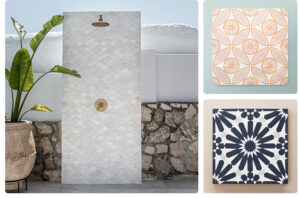Things You Should Know About Tiles Factory Design
About Tiles Factory Design
A tile factory is an industrial complex that creates a wide variety of pollution and must control its emissions to meet air control standards. Tile manufacture generates lead and fluorine compounds, but this has decreased with the development of low-lead glazes. The production process can also reduce the emission of fluorine using scrubbers and fabric filters coated in lime, which is then recycled as raw material for future tiles. If tiles are pressed in a mold, the tile factory must meet strict air control standards.
The Hydraulic tiles factory design by Alfredo Haberli is an homage to the traditional Mediterranean material while creating an entirely new universe. This Mallorcan company has been manufacturing hydraulic floor tiles and other terrazzo items since 1933. The company is rooted in Mallorcan tradition and is single-mindedly committed to delivering high-quality products and craftsmanship. Here are some things you should know about this unique type of tile factory design.

The process of ram pressing in a tile factory involves the use of a hydraulic press to form a tile body. The process uses an extruded slug of tile body, which is then pressed between two halves of a porous or hard mold. After the part has been formed, it is removed from the mold by vacuuming or air-forcing the top half. The pressed part may require finishing, so extra care must be taken during the process.
Things You Should Know About Tiles Factory Design
The pressure-glazing process involves forcing a glass-like material through a screen. A rubber squeegee or other device is used to force the glass through the screen. Once inside, the glaze cools and adheres to the tile. This process provides the best finish for the surface. The process of pressure-glazing a tile also ensures that the tile is as durable as possible. Pressure-glazing tiles are an excellent choice for bathrooms, kitchens, and other interior design projects.
The cement tile mold library is a collection of molds for common patterns. For new patterns or different sizes, a custom mold must be made. A pattern mold sits inside a frame mold and determines the overall shape of the tile. A format mold is also needed for the design on the tile’s face. Once you have the pattern mold, you can start making your tile. You can also create your own patterns by mixing and matching your original pattern.
While digital technology has completely transformed most industries, the ceramic tile industry is no different. Its rapid evolution and use of digital printing has enabled new opportunities in tile manufacturing and expanded the depth and breadth of product offerings. Here are three ways digital printing can help the tiles factory design process: